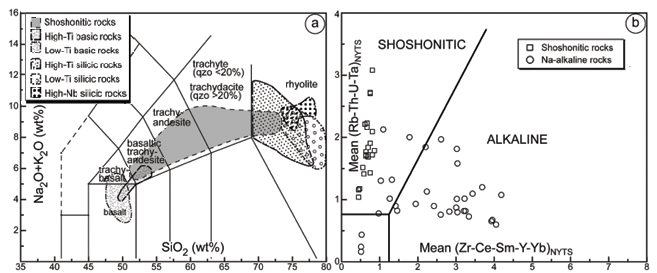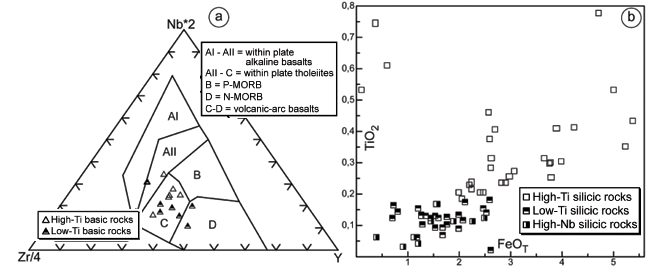The Neoproterozoic shoshonitic and mildly alkaline bimodal volcanism of Southernmost Brazil is represented by rock assemblages associated to sedimentary successions, deposited in strike-slip basins formed at the post-collisional stages of the Brasilian/Pan-African orogenic cycle. The best-preserved volcano sedimentary associations occur in the Camaquã and Campo Alegre Basins, respectively in the Sul-riograndense and Catarinense Shields and are outside the main shear belts or overlying the unaffected basement areas. These basins are characterized by alternation of volcanic cycles and siliciclastic sedimentation developed dominantly on a continental setting under subaerial conditions. This volcanism and the coeval plutonism evolved from high-K tholeiitic and calc-alkaline to shoshonitic and ended with a silica-saturated sodic alkaline magmatism, and its evolution were developed during at least 60 Ma. The compositional variation and evolution of post-collisional magmatism in southern Brazil are interpreted as the result mainly of melting of a heterogeneous mantle source, which includes garnet-phlogopite-bearing peridotites, veined-peridotites with abundant hydrated phases, such as amphibole, apatite and phlogopite, and eventually with the addition of an asthenospheric component. The subduction-related metasomatic character of post-collisional magmatism mantle sources in southern Brazil is put in evidence by Nb-negative anomalies and isotope features typical of EM1 sources.
post-collisional; Neoproterozoic; volcanism; shoshonite; Na-alkaline










